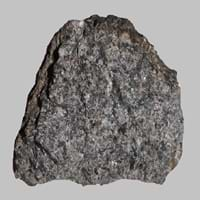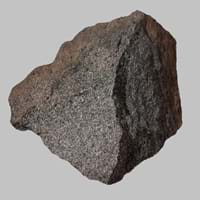Definition
Nepheline Syenite is a holocrystalline plutonic rock resembling syenite but containing nepheline and lacking quartz
Larvikite is an igneous rock and a variety of monzonite, notable for the presence of thumbnail-sized crystals of feldspar
Origin
Unknown
Larvik, Norway
Discoverer
Unknown
Unknown
Etymology
From origin of a Palaeozoic nepheline syenite from northern Shanxi Province, China
From the town of Larvik in Norway, where this type of igneous rock is found
Class
Igneous Rocks
Igneous Rocks
Sub-Class
Durable Rock, Medium Hardness Rock
Durable Rock, Hard Rock
Other Categories
Fine Grained Rock, Opaque Rock
Coarse Grained Rock, Fine Grained Rock, Medium Grained Rock, Opaque Rock
Texture
Granular
Phaneritic
Color
Brown, Buff, Cream, Green, Grey, Pink, White
Black, Brown, Light to Dark Grey, White
Durability
Durable
Durable
Appearance
Banded and Foilated
Shiny
Interior Uses
Countertops, Decorative Aggregates, Flooring, Homes, Interior Decoration
Decorative Aggregates, Homes, Interior Decoration
Exterior Uses
As Building Stone, As Facing Stone, Garden Decoration, Paving Stone
As Building Stone, As Facing Stone, Garden Decoration, Office Buildings, Paving Stone
Other Architectural Uses
Curbing
Curbing
Construction Industry
As Dimension Stone, Cement Manufacture, Construction Aggregate, for Road Aggregate, Landscaping, Making natural cement, Manufacture of Magnesium and Dolomite Refractories, Production of Glass and Ceramics
As Dimension Stone, Cement Manufacture, Construction Aggregate, for Road Aggregate
Medical Industry
Not Yet Used
Not Yet Used
Antiquity Uses
Artifacts, Monuments, Sculpture
Artifacts, Monuments, Sculpture
Commercial Uses
Cemetery Markers, Creating Artwork
Cemetery Markers, Commemorative Tablets, Creating Artwork
Types
Borolanite and Litchfieldite
Quartz Monzonite, Syenite and Diorite
Features
Application of acids on the surface causes cloudy frosting, Available in Lots of Colors and Patterns, Dissolves in hydrochloric acid, Is one of the oldest rock
Available in lots of colors, Is one of the oldest rock
Archaeological Significance
Famous Monuments
Data Not Available
Data Not Available
Famous Sculptures
Data Not Available
Data Not Available
Pictographs
Used
Not Used
Petroglyphs
Used
Not Used
Formation
Nepheline Syenites are formed due to alkaline igneous activities and are generally formed in thick continental crustal areas or in Cordilleran subduction zones.
Larvikite is a fine-grained, hard rock which is a type of metasomatite, essentially altered basalt. It forms with or without crystallization, either below the surface as intrusive rocks or on the surface as extrusive rocks.
Mineral Content
Albite, Amphibole, Biotite, Cancrinite, Feldspar, Hornblende, Plagioclase, Pyroxene, Sodalite
Albite, Amphibole, Apatite, Biotite, Feldspar, Hornblade, Ilmenite, Magnetite, Muscovite or Illite, Olivine, Plagioclase, Pyroxene, Quartz, Sulfides, Titanite, Zircon
Compound Content
Aluminium Oxide, CaO, Iron(III) Oxide, FeO, Potassium Oxide, MgO, MnO, Sodium Oxide, Phosphorus Pentoxide, Silicon Dioxide, Titanium Dioxide
Aluminium Oxide, CaO, Iron(III) Oxide, FeO, Potassium Oxide, MgO, MnO, Sodium Oxide, Phosphorus Pentoxide, Silicon Dioxide, Titanium Dioxide
Types of Metamorphism
Burial Metamorphism, Impact Metamorphism
Cataclastic Metamorphism, Impact Metamorphism, Regional Metamorphism
Types of Weathering
Biological Weathering, Chemical Weathering
Biological Weathering, Chemical Weathering, Mechanical Weathering
Types of Erosion
Chemical Erosion
Chemical Erosion
Grain Size
Fine Grained
Medium to Fine Coarse Grained
Fracture
Conchoidal to Uneven
Not Available
Porosity
Less Porous
Less Porous
Luster
Greasy to Dull
Subvitreous to Dull
Cleavage
Poor
Not Available
Toughness
Not Available
Not Available
Specific Gravity
2.6
2.8-3
Transparency
Translucent to Opaque
Opaque
Density
2.6 g/cm3
2.9-2.91 g/cm3
Specific Heat Capacity
Not Available
Resistance
Heat Resistant, Impact Resistant, Wear Resistant
Heat Resistant, Impact Resistant, Pressure Resistant
Deposits in Eastern Continents
Asia
Indonesia, Iran, Russia, Saudi Arabia, Sri Lanka, Taiwan, Thailand, Turkey, Turkmenistan, Vietnam
Not Yet Found
Africa
Angola, Egypt, Madagascar, Namibia, Nigeria, South Africa
Not Yet Found
Europe
Andorra, Finland, France, Great Britain, Italy, Norway, Portugal, Spain, Sweden
Bulgaria, England, Germany, Norway, Romania, Switzerland
Others
Greenland
Not Yet Found
Deposits in Western Continents
North America
Canada, USA
USA
South America
Brazil, Chile, Colombia, Uruguay, Venezuela
Argentina, Bolivia, Brazil, Chile, Colombia, Ecuador, Peru
Deposits in Oceania Continent
Australia
New Zealand, Queensland, South Australia, Tasmania, Western Australia
New South Wales, New Zealand, Queensland, South Australia, Western Australia










